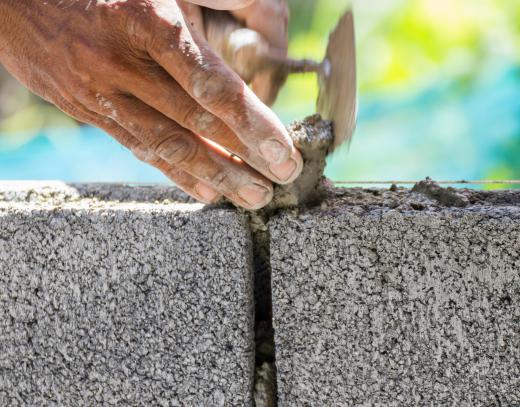Steam curing is a process for hardening concrete, cement, and mortar that involves exposure to warm steam. Materials subjected to this hardening technique tend to cure more uniformly and also much more quickly than those hardened via other processes. There are some disadvantages to this process that must be considered before deciding to use it for curing, and there may be certain applications where this method is not appropriate.
In steam curing, objects to be cured are placed inside a chamber or room. Using a control panel, an operator can set the temperature and humidity level. Variations in pressure may also be possible, depending on the device. The heat and moisture penetrate the materials quickly to fully hydrate and harden them. Steam curing requires a fraction of the time involved with traditional curing and quickly strengthens the products so they can be used immediately.

The alternative to steam curing is allowing products to cure naturally at ambient temperatures and humidity levels. Timing is important when using concrete, cement, and mortar, since cool, moist weather tends to provide the best cure. Dry, hot weather will cause weakness and cracking that may compromise the finished product and in some cases, the damage can be extensive enough that the product cannot be used. This is an especially important consideration when working outdoors, where controlling temperatures and humidity levels is not possible.

The problem with steam cured cement is that in the long term, the cement may be weaker. Steam cured cement, concrete, and mortar products are stronger at the outset than traditionally cured products, but they are more likely to fracture, crumble, and develop other problems later in their useful lives. This may not be a concern in all situations, but it can become a serious issue in others. Variations in the temperature and humidity levels used during curing that change the length of time required will also vary the long-term strength of the product.
Numerous manufacturers produce steam curing equipment, along with other accessories for working with cement, concrete, and mortar. Chambers for steam curing are available, in addition to equipment that can be used to assemble curing rooms. Manufacturers provide detailed specifications for their products in order to allow people to order the products most suited to their needs. Companies that use this process must consider the types of materials they are curing and how they will be used when determining the appropriate humidity and temperature for this curing process.
Ever since she began contributing to the site several years ago, Mary has embraced the exciting challenge of being a About Mechanics researcher and writer. Mary has a liberal arts degree from Goddard College and spends her free time reading, cooking, and exploring the great outdoors.

